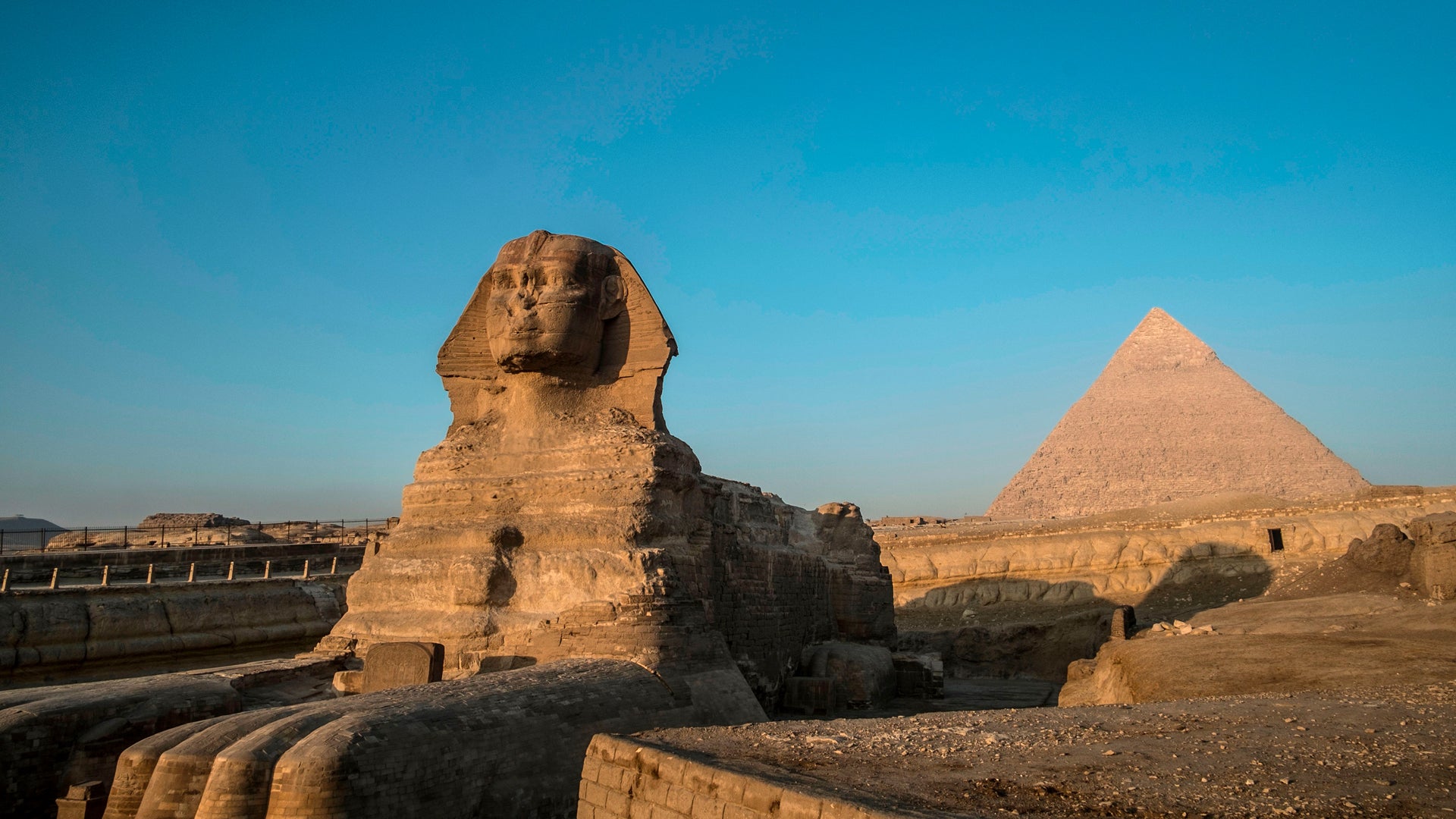What Is The Role Of The Sphinx?
Have you ever wondered what the role of the Sphinx is? Well, get ready to unravel the mysteries of this ancient marvel! The Sphinx, with its majestic lion body and human head, has captivated the imagination of people for centuries. But what exactly was its purpose? Let’s delve into the fascinating world of ancient Egypt and uncover the secrets behind the role of the Sphinx.
In the vast desert landscape of Egypt, the Sphinx stands as a guardian of the past, watching over the Great Pyramids of Giza. Its enigmatic presence raises questions about its function and significance. Was it merely a symbol of power and authority or did it serve a more practical purpose? The role of the Sphinx goes beyond its imposing appearance, and to understand it, we must explore the beliefs and customs of the ancient Egyptians.
In ancient Egyptian mythology, the Sphinx represented a divine figure known as “Horus of the Horizon.” Horus was a solar deity associated with protection and the afterlife. It was believed that the Sphinx served as a protector of the royal necropolis, safeguarding the tombs of pharaohs and their treasures. Additionally, the Sphinx was believed to possess the wisdom of Thoth, the god of knowledge and writing. This connection to wisdom and protection gives us a glimpse into the multifaceted role of the Sphinx in ancient Egyptian society.
As we embark on this journey to unravel the mysteries of the Sphinx, we will delve deeper into its historical context, explore the legends surrounding its construction, and examine the cultural significance it held for the ancient Egyptians. Get ready to uncover the secrets of the Sphinx and gain a deeper understanding of its role in the fascinating world of ancient Egypt.
The Sphinx is a mythical creature with the body of a lion and the head of a human or animal. In ancient Egypt, the Sphinx played a significant role as a guardian and protector. It was believed to guard important areas such as temples and tombs, symbolizing strength and power. The most famous Sphinx is the Great Sphinx of Giza, which is located near the pyramids. Its role was not only protective but also served as a symbol of royal authority and divine connection. The Sphinx continues to captivate people’s imaginations and is an iconic symbol of ancient Egypt.

The Role of the Sphinx
The Sphinx is an iconic monument located in Giza, Egypt, and it has fascinated people for centuries. This magnificent structure, with the body of a lion and the head of a human, stands as a testament to the rich history and culture of ancient Egypt. But what is the role of the Sphinx? What purpose did it serve in the ancient world? In this article, we will explore the various theories and interpretations surrounding the Sphinx and its significance.
The Enigmatic Guardian of the Pyramids
The Sphinx is believed to have been built during the reign of the Pharaoh Khafre, around 2500 BCE. It was constructed as a guardian and protector of the nearby pyramids, particularly the Pyramid of Khafre. The Sphinx was strategically placed at the entrance of the Giza plateau, serving as a formidable deterrent to anyone who wished to deface or desecrate the sacred tombs of the pharaohs.
One theory suggests that the Sphinx was intended to symbolize the pharaoh’s divine power and authority. The lion body represents strength and courage, while the human head symbolizes wisdom and intelligence. Together, these traits were thought to embody the qualities of a great ruler, conveying a message of strength and protection to the people of Egypt.
Symbolic Significance
The Sphinx was also associated with the Egyptian sun god, Ra, and was seen as a protector of the pharaoh’s soul in the afterlife. It was believed that the Sphinx would guard the entrance to the underworld, ensuring safe passage for the deceased pharaoh into the realm of the gods. This belief underscores the spiritual significance of the Sphinx and its crucial role in Egyptian funerary rituals.
Another interpretation of the Sphinx’s role is rooted in ancient Egyptian mythology. The Sphinx has been linked to the Egyptian deity, Horus, the falcon-headed god of the sky. According to the myth, Horus defeated the evil god Set and became the rightful ruler of Egypt. The Sphinx, with its lion body and human head, may have been a representation of Horus, symbolizing his triumph over evil and his role as a protector of Egypt.
Architectural Marvel and Symbol of Power
Beyond its symbolic and spiritual significance, the Sphinx is also an architectural marvel. Carved out of a single block of limestone, the statue stands at an impressive height of approximately 66 feet and spans a length of 240 feet. The precision and craftsmanship required to create such a monumental structure is a testament to the advanced engineering skills of the ancient Egyptians.
The Sphinx also served as a visual representation of the power and grandeur of the pharaohs. It was intended to awe and inspire all who approached the pyramids, leaving a lasting impression of the might and authority of the Egyptian rulers. The Sphinx, with its imposing presence and enigmatic smile, continues to captivate visitors from around the world, reminding us of the ingenuity and creativity of the ancient Egyptians.
Theories and Controversies
Despite its significance, the true purpose and meaning of the Sphinx remain the subject of debate among historians, archaeologists, and Egyptologists. One controversial theory proposes that the Sphinx is much older than previously believed and may have been built by an ancient civilization predating the Egyptians. This theory suggests that the erosion patterns on the statue’s body indicate that it was exposed to heavy rainfall, which would have been impossible during the time of its supposed construction.
Another theory suggests that the Sphinx was originally carved with the head of a different deity, possibly that of the sun god Ra, and was later re-carved with the face of Khafre. This theory is supported by the fact that the head of the Sphinx appears disproportionate to its body, leading some to believe that it was modified at some point in its history.
Preserving the Sphinx
Preserving the Sphinx has been a continuous challenge due to its exposure to natural elements and human activity. Over the centuries, the statue has suffered from erosion, weathering, and vandalism. Efforts are ongoing to protect and conserve this ancient monument, ensuring its survival for future generations to appreciate and study.
In recent years, restoration projects have been undertaken to stabilize the Sphinx and mitigate the effects of erosion. Advanced technologies and techniques, such as laser scanning and 3D modeling, have been employed to document and analyze the statue’s condition, allowing for targeted conservation efforts.
In conclusion, the role of the Sphinx is multifaceted and encompasses its function as a guardian, symbol of power, and embodiment of ancient Egyptian beliefs and mythology. Whether it served as a protector of the pyramids, a representation of divine authority, or a testament to the architectural prowess of the Egyptians, the Sphinx continues to captivate and intrigue us with its enigmatic presence.
Key Takeaways: What is the role of the Sphinx?
- The Sphinx is a mythical creature with the body of a lion and the head of a human or animal.
- It is believed to have served as a guardian or protector, often placed at the entrance of temples or tombs.
- The Sphinx in Egypt is famous for its association with the Great Pyramids of Giza.
- Its role was to symbolize strength, wisdom, and divine protection.
- The Sphinx also played a role in Egyptian mythology, representing the sun god Ra or the pharaoh’s divine authority.
Frequently Asked Questions
Here are some frequently asked questions about the role of the Sphinx:
Q: What is the Sphinx?
The Sphinx is a mythical creature with the body of a lion and the head of a human or animal. It is often depicted as a guardian or protector.
The most famous Sphinx is the Great Sphinx of Giza, located in Egypt. It is a monumental statue that has captured the imagination of people for centuries.
Q: What is the role of the Sphinx in ancient Egypt?
In ancient Egypt, the Sphinx played a significant role in religious and royal contexts. It was often associated with the sun god Ra and represented divine wisdom and power.
The Sphinx was also believed to be a protector of sacred places, such as temples and tombs. It was thought to guard the entrance to the pyramids, ensuring the safety of the pharaoh’s burial chamber.
Q: What symbolism does the Sphinx represent?
The Sphinx symbolizes various concepts in different cultures. In ancient Egypt, it represented strength, wisdom, and authority. The lion body symbolized power and protection, while the human or animal head represented intelligence and spirituality.
Some interpretations also suggest that the Sphinx represents the duality of human nature, with the lion representing our animal instincts and the human head representing our higher consciousness.
Q: Was the Sphinx a deity in ancient Egypt?
While the Sphinx was not considered a deity in ancient Egypt, it held a sacred status and was associated with important gods and goddesses. It was often depicted alongside the god Horus and the goddess Sekhmet.
The Sphinx was also believed to be a manifestation of the pharaoh’s divine power and authority. It served as a symbol of the pharaoh’s connection to the gods and his role as a ruler.
Q: Why is the Great Sphinx of Giza so famous?
The Great Sphinx of Giza is famous for several reasons. Firstly, it is one of the oldest and largest monumental sculptures in the world, dating back to the Old Kingdom of Egypt.
Secondly, its enigmatic appearance and the mysteries surrounding its construction and purpose have fascinated archaeologists, historians, and tourists alike. The Sphinx’s missing nose and weathered features add to its allure and mystique.
Lastly, its location near the pyramids of Giza, including the Great Pyramid of Khufu, makes it a popular tourist attraction and a symbol of ancient Egyptian civilization.

Why Was The Great Sphinx of Giza Built? | Blowing Up History
Final Thought: Unlocking the Mysteries of the Sphinx
After delving into the fascinating world of the Sphinx, it’s clear that this enigmatic creature holds a significant role in both history and mythology. With its majestic lion body and human face, the Sphinx has captured the imagination of countless generations. But what is its true purpose?
Throughout history, the Sphinx has been associated with various roles and meanings. From being a guardian of sacred spaces to a symbol of wisdom and riddles, the Sphinx has left us with many unanswered questions. However, one thing is certain – its iconic presence has stood the test of time.
In ancient Egyptian civilization, the Sphinx was often depicted as a guardian deity, watching over the tombs and temples. Its imposing figure served as a symbol of protection and power. The riddles associated with the Sphinx, as seen in the myth of Oedipus, highlight its role as a gatekeeper to hidden knowledge and wisdom.
From an SEO perspective, it’s crucial to acknowledge the intrigue and curiosity surrounding the Sphinx. By incorporating relevant keywords such as “Sphinx,” “Egyptian mythology,” and “guardian deity,” this article can attract readers who are interested in unraveling the mysteries of this iconic creature.
In conclusion, the Sphinx continues to captivate our imagination, leaving us pondering its true purpose. Whether it be as a guardian, a symbol of wisdom, or a riddler of ancient secrets, the Sphinx represents a timeless enigma. As we continue to explore the depths of history and mythology, let us embrace the wonder and awe that the Sphinx evokes, forever standing as a testament to the power of human ingenuity and the mysteries that lie beyond our understanding.






